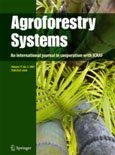We found that concessions certified by the Forest Stewardship Council (FSC, N=3), when compared with non-certified concessions (N=6), did not have lower overall CO2 emissions from logging activity (felling, skidding, and hauling). On the other hand, FSC certified concessions did have lower emissions from one type of logging impact (skidding), and we found evidence of a range of improved practices using other field metrics. One explanation for these results may be that FSC criteria and indicators, and associated RIL practices, were not designed to achieve overall emissions reductions. Also, commonly used field metrics are not reliable proxies for overall logging emissions performance. Further, the simple distinction between certified and non-certified concessions does not fully represent the complex history of investments in improved logging practices.
To clarify the relationship between RIL and emissions reductions, we propose the more explicit term “RIL-C” to refer to the sub-set of RIL practices that can be defined by quantified thresholds and that result in measurable emissions reductions. If tropical forest certification is to be linked with CO2 emissions reductions, certification standards need to explicitly require RIL-C practices.
DOI:
https://doi.org/10.1111/gcb.12386Altmetric score:
Dimensions Citation Count:
Publication year
2013
Authors
Griscom, B.; Ellis, C.; Putz, F. E.
Language
English
Keywords
reduced impact logging, emission, tropical forests
Geographic
Indonesia























